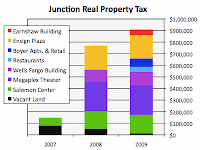
The name alone makes this a compelling peak to climb. (I sometimes pronounce it “Ppppffffeifferhorn” just for fun.) It’s located southeast of Salt Lake City on the ridge between Little Cottonwood and American Fork, about half way between Lone Peak and Snowbird. Summit elevation: 11,326 feet.
We’d been planning this hike since the annual Pfeifferhorn Award dinner last November, when my friend Joan from The Nature Conservancy suggested it. By the time of yesterday’s hike we had each recruited some illustrious company, so it was a grand outing to a grand destination.

With so many terrific hikes closer to Ogden, I don’t get to the rest of the Wasatch Mountains often enough. But the Cottonwood Canyons do offer a few things that Weber County lacks: Summits over 11,000 feet, large alpine lakes, and federally protected capital-W Wilderness. The Pfeifferhorn lies within the Lone Peak Wilderness (Utah’s first), and the route to it passes beautiful Red Pine Lake. In July and August the high altitudes offer welcome cooler temperatures. While ambling over alpine terrain you can enjoy the cute little pikas constantly eeping at you.
This hike isn’t for everyone. You need to be reasonably fit and have pretty good balance to negotiate the steep slopes and large boulders. It also helps to have someone along who has done it before, so you don’t take a wrong turn and get into real trouble. Snow and ice make the hike much more dangerous earlier in the summer.

As we made our way toward the summit, I especially enjoyed watching my friend Jock, an experienced alpine climber who did a winter ascent of the Pfeifferhorn a few decades ago. Now 74, Jock had planned to stop at Red Pine Lake but couldn’t resist going higher. As we traversed the steep boulders he shot ahead, clearly in his element. By the time I reached the top he was already on his way down.



